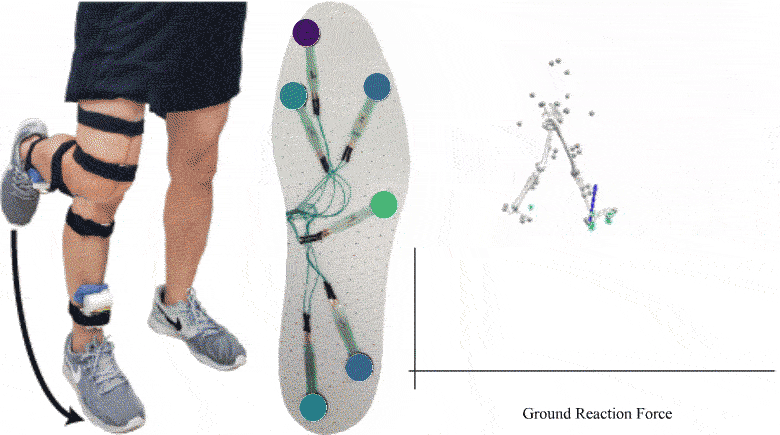
Ambulatory monitoring of ground reaction force (GRF) and plantar center of pressure (CoP) could improve management of a variety of health conditions that impair mobility, including stroke, Parkinson’s disease, anterior cruciate ligament injury, and osteoarthritis. Insoles instrumented with force-sensitive resistors are an unobtrusive, low-cost, and low-power technology for sampling GRF and CoP in real-world environments. However, force-sensitive resistors have variable response characteristics that complicate estimation of GRF and CoP. This study introduces a unique data analytic pipeline that enables accurate estimation of GRF and CoP despite relatively inaccurate sensor responses. This work also investigates whether inclusion of a complementary knee angle sensor improves estimation accuracy.
To validate the proposed gait monitoring system and data analytic pipeline, seventeen healthy subjects were equipped with 1) an insole instrumented with six force-sensitive resistors and 2) a string-based knee angle sensor. Subjects walked in a straight line at self-selected slow, preferred, and fast speeds over an in-ground force platform. Twenty repetitions were performed for each speed. Supervised machine learning models estimated weight-normalized GRF and shoe size-normalized CoP, which were re-scaled to obtain GRF and CoP. Anteroposterior GRF, Vertical GRF, and Anteroposterior CoP were estimated with a normalized root mean square error of less than 5%. Mediolateral GRF and CoP were estimated with a normalized root mean square error of 8.1% and 6.4%, respectively. Knee angle-related features slightly improved GRF estimates. Weight- and shoe-size-normalized models accurately estimated GRF and CoP despite deficiencies in force sensor data. Ambulatory use of the proposed system could enable objective, longitudinal monitoring of severity and progression for a variety of health conditions.
